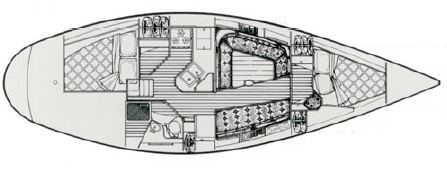Bob Robertson
Member III
Hi,
I am planning to install an Espar heater in our 1988 38-200 in the spring. However, I have thought about this before.
I am hoping that someone has completed an installation in a similar boat and would be willing to share their knowledge.
I am wondering which unit was chosen, were the heat registers(termilology?) are located, where the thermostat is located, and whether a water circulating unit was chosen. I am assuming the water circulating system is easiest to install. Running the larger air ducts forward from one of the lockers or from the engine compartment looks to be very difficult at best.
I haven't as yet been able to figure out the best route to run the heater hoses forward. The ice box pretty well blocks the port side.
Thanks,
I am planning to install an Espar heater in our 1988 38-200 in the spring. However, I have thought about this before.
I am hoping that someone has completed an installation in a similar boat and would be willing to share their knowledge.
I am wondering which unit was chosen, were the heat registers(termilology?) are located, where the thermostat is located, and whether a water circulating unit was chosen. I am assuming the water circulating system is easiest to install. Running the larger air ducts forward from one of the lockers or from the engine compartment looks to be very difficult at best.
I haven't as yet been able to figure out the best route to run the heater hoses forward. The ice box pretty well blocks the port side.
Thanks,

